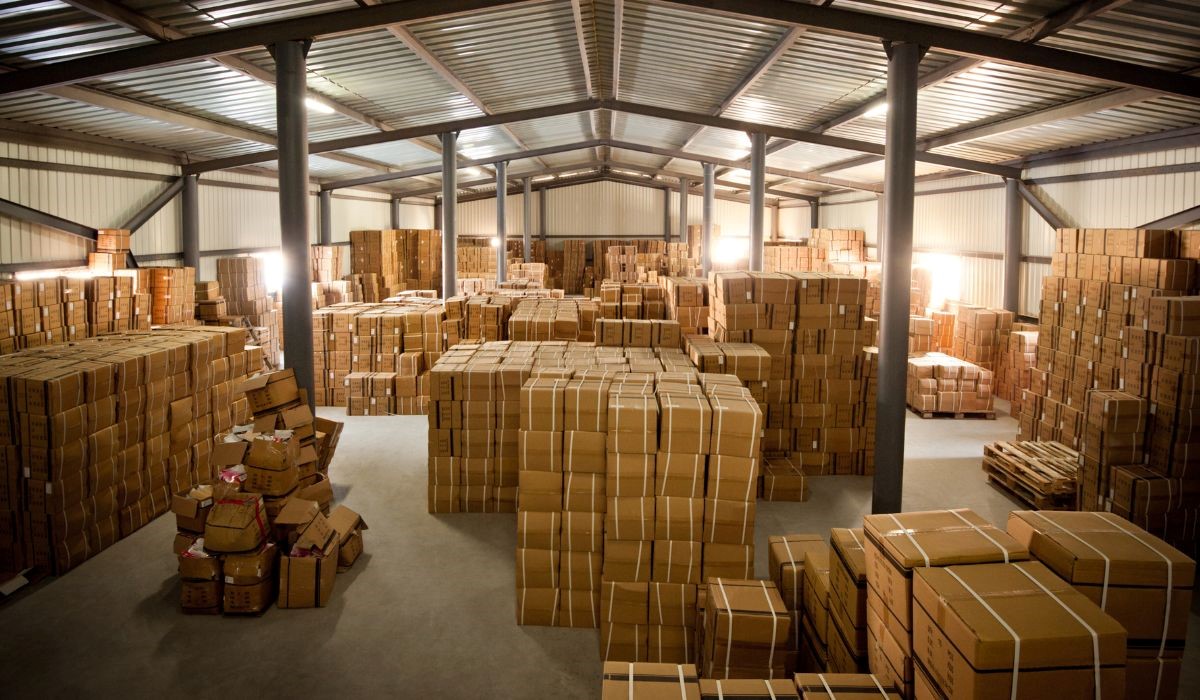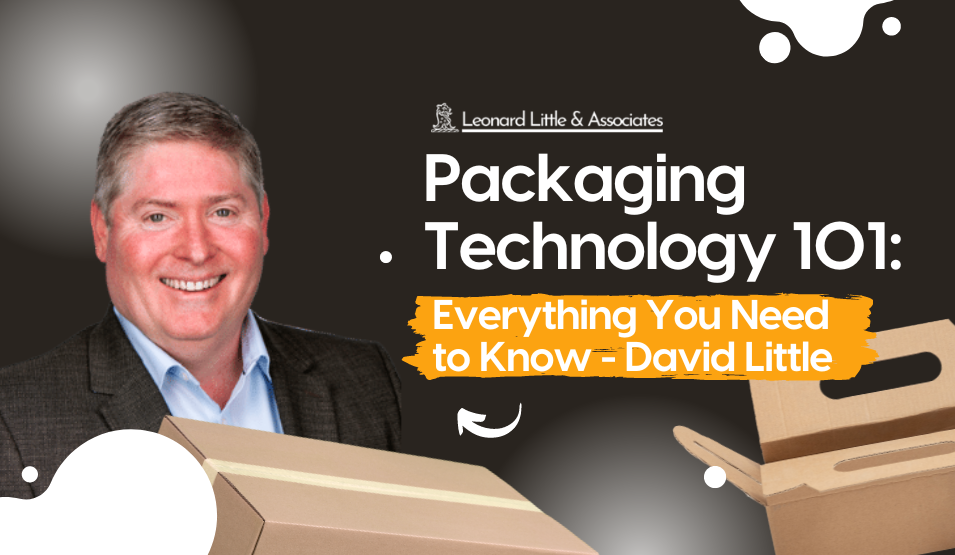As a packaging technologist, I understand the critical role that packaging technology plays in today’s fast-paced world. The packaging industry has grown by leaps and bounds in recent years, driven by changing consumer demands and technological advancements. The role of a packaging technologist has become increasingly important in ensuring that products are packaged safely, securely, and in a sustainable manner.
In this blog post, I will take you through nearly everything you need to know about packaging technology. We will explore the basics of packaging technology, including what it is and the role of a packaging technologist. We will also dive into how technology has changed the packaging industry, the three layers of packaging, and what smart packaging is.
Moreover, we will look at the critical functions that packaging must fulfil, including protection, containment, and communication. By the end of this post, you’ll have a better understanding of packaging technology and its importance in today’s world.
Let’s get started!
What is packaging technology?
Packaging technology refers to the process of designing, creating, and producing packages that economically, protect, preserve, inform and contain the product, during filling, use, carriage, sale and storage, while meeting legal requirements and environmental considerations.
This includes the materials used, such as plastics, paper, and metal, as well as the machinery and techniques used for packaging. Packaging technology aims to ensure that products are delivered to customers in a safe, efficient, and cost-effective manner.
It involves considering factors such as product size, weight, fragility, and shelf life, as well as environmental concerns such as sustainability and waste reduction. In short, packaging technology is essential for ensuring that products are packaged appropriately and safely for sale and delivery.
What is the role of packaging technology?
Packaging technology plays a crucial role in ensuring the safety, quality, and sustainability of products throughout the supply chain.
In the food and drink sector, sustainable packaging materials and food packaging technology are crucial for preserving the quality and freshness of food products. These help to prevent spoilage and contamination, extend shelf life, and maintain nutritional value.
Sustainable packaging solutions are important in food production. They help reduce waste and minimize the environmental impact of packaging. This is increasingly important as we strive to protect the environment.
In the pharmaceutical sector, packaging technology is vital in ensuring that medicines and medical devices are delivered to patients safely and efficiently. Packaging helps to protect products from contamination and degradation, ensure proper dosage, and provide information about usage and storage. In addition, packaging technology is critical in meeting regulatory requirements for product safety and efficacy.
In the healthcare sector, packaging technology is essential in providing sterile and safe environments for medical equipment, devices, and supplies. Packaging helps to protect products from contamination and damage during transportation and storage and provides clear labelling generally contains instructions for use.
The role of packaging technology is critical in ensuring the safety, quality, and sustainability of products in various industries. In each sector, packaging technology plays a unique role in meeting the specific needs of the industry and delivering products safely and efficiently to consumers
How has technology changed packaging?
Technology has significantly changed packaging over time by introducing new materials, manufacturing processes, and designs that have improved the functionality, sustainability, and aesthetics of the packaging. Here are some of the ways technology has influenced packaging:
Materials:
In the past, packaging materials were limited to natural resources such as wood, paper, and glass. These materials were often heavy, fragile, and not suitable for all types of products.
Today, technology has introduced a wide range of materials such as plastics, aluminium, and more recently biodegradable materials that are lighter, more durable, and can have similar barrier properties. For example, plastic packaging is now commonly used for food products, replacing glass and metal containers. Biodegradable packaging materials such as plant-based plastics are becoming increasingly popular due to their sustainability and environmental benefits.
Manufacturing Processes:
Traditional manufacturing processes for packaging involved manual labour, which was time-consuming, expensive, and prone to errors. Printing usually done by Litho, Flexo or Gravure, depending on the substrate and the run length and desired print quality. Now we have these and other options, with better print quality, colour control and even reduced origination costs.
Today, technology has introduced more efficient and precise manufacturing with automation and robotics, assisting most production systems including injection, moulding, and thermoforming, which allow for high-speed production and reduced costs. Digital printing technology has also improved the quality of short run printing, allowing for more complex and vivid graphics and images to be printed on the packaging. For more information about print technology for packaging check out our article here ( link insertion)
Design:
The packaging design was limited to simple shapes and basic graphics. The design process was often slow, manual, and expensive.
Today, technology has revolutionised packaging design, making it more innovative, creative, and appealing to consumers. Computer-aided design (CAD) software allows designers to create complex 3D models of packaging, while virtual reality (VR) and augmented reality (AR) technologies enable customers to see the product packaging in a virtual environment before purchasing it.
We do need to be careful with added enhancements, like foiling, lamination, metalising, digital embossing, etc., as many of these, marketing embellishments, can actually make recycling the pack more difficult. So a knowledge-based joined-up thinking approach is key, to making good sustainable decisions.
Sustainability:
In the past, packaging was often designed for convenience rather than sustainability. Packaging materials were often non-recyclable, which led to high levels of waste.
Today, technology has introduced more sustainable packaging materials and manufacturing processes. Biodegradable and compostable materials are being used to reduce waste and carbon footprint, while new manufacturing processes are being developed to reduce energy consumption and greenhouse gas emissions.
Technology has transformed the packaging industry, improving the functionality, sustainability, and aesthetics of the packaging. The advancements in materials, manufacturing processes, design, and sustainability have made packaging more efficient, cost-effective, and environmentally friendly, but it has also got more complex and technically challenging, so knowledge and education is key.
The three types of packaging
Packaging is a crucial aspect of any product, as it serves as the protective layer that keeps the product safe and intact during transit, storage, and handling. Packaging can be broadly classified into three categories: primary, secondary, and tertiary packaging.
Primary Packaging:

Primary packaging is the first layer of packaging that comes in direct contact with the product. It is typically the purchased unit that the customer takes home
It is designed to protect the product from contamination, damage, and tampering. The primary packaging can be made from a variety of materials, such as plastic, glass, metal, or paperboard.
Some examples of primary packaging include bottles, jars, cans, pouches, blister packs, and tubes. Primary packaging is also where product branding and labelling are typically applied.
Secondary Packaging:

Secondary packaging is the second layer of packaging that is used to group and protect primary packages during transportation and storage.
It is usually made of sturdier materials, such as cardboard, corrugated board, or shrink wrap. Secondary packaging also helps to facilitate product identification, handling, and stacking.
Examples of secondary packaging include boxes, cartons, trays, and shrink wrap.
Tertiary Packaging:

Tertiary packaging is the third layer of packaging that is used to transport and store large quantities of products. It is designed to protect the products during long-distance transportation and storage and to make handling and distribution more efficient.
Tertiary packaging is usually made of durable materials, such as wood, metal, or plastic, and is often reusable or recyclable.
Examples of tertiary packaging include pallets, pallet boxes, containers, and bulk bags.
What functions must packaging fulfil?
Packaging plays a crucial role in protecting and preserving products during storage, transportation, and handling, ensuring both quality and safety. It serves as the first point of contact for the consumer and is often the first impression they have of the product.
Packaging must fulfil essential functions such as quality and safety, food freshness, packaging process, identification, convenience, communication, environmental sustainability, and security. These functions are described below.
- Protection: The primary function of packaging is to protect the product from damage, contamination, and tampering during storage, transportation, and handling. The packaging should be able to withstand external forces, such as impact, vibration, compression, and temperature fluctuations, to prevent damage to the product inside.
- Preservation: Packaging should also preserve the product’s quality and freshness, extend its shelf life, and prevent spoilage or degradation. The packaging should be able to prevent moisture, oxygen, light, and other environmental factors from degrading the product’s quality and food freshness.
- Identification: Packaging should facilitate the easy identification of the product and its brand. The packaging should have clear labelling and branding to help consumers recognize the product, understand its features and benefits, and distinguish it from competing products.
- Convenience: Packaging should make it easy for consumers to handle, use, and store the product. The packaging should be easy to open, close, and dispense, and should be designed to fit easily on store shelves and in consumers’ homes. The packaging process should be user-friendly, efficient, and safe.
- Communication: Packaging should communicate important information about the product, such as its ingredients, nutritional value, usage instructions, and safety warnings. The packaging should be designed to provide relevant information to the consumer, in a clear and concise manner, ensuring both quality and safety.
- Environmental sustainability: Packaging should be designed to minimise packaging waste and environmental impact. The packaging should be recyclable, reusable, or biodegradable, and should be made from sustainable materials. The packaging process should aim to reduce carbon footprint, emissions, and energy consumption.
- Security: Packaging should provide protection against theft, counterfeiting, and tampering. The packaging should be designed to deter unauthorised access and prevent tampering, with features such as tamper-evident seals, security labels, and anti-counterfeit measures.
The packaging can also incorporate security devices such as RFID tags or holograms to track the product’s location and prevent theft.
Packaging can provide security and ensure the product reaches its destination in its original state. This helps to guarantee quality and safety and prevents harm to consumers or loss of revenue for the manufacturer.
Emerging Trend of Packaging – What is Smart Packaging?
Smart packaging is a type of packaging that is equipped with sensors, indicators, or other electronic devices to provide additional functionality beyond the basic functions of protecting and preserving the product. Smart packaging can help monitor the product’s condition, track its location, provide information to consumers, and improve the supply chain’s efficiency.
Smart packaging is a trend because it offers many benefits to both consumers and businesses. Consumers are increasingly demanding more convenience and transparency in product information and safety.
Smart packaging technologies can provide this by offering features such as QR codes, RFID tags, or NFC (near field communication) chips that can be scanned by a smartphone to access additional information about the product, such as its nutritional value, allergen information, or sustainability credentials.
Smart packaging can also help businesses improve their operations and reduce waste. For example, sensors in the packaging can monitor the product’s temperature, humidity, or other factors that affect its quality and safety. This information can be used to optimise the supply chain, reduce waste, and improve the product’s quality.
Additionally, smart packaging can help companies prevent counterfeiting, theft, and tampering by incorporating security features such as tamper-evident seals, security labels, and anti-counterfeit measures. This can help protect the brand and ensure that the product reaches the intended recipient in its original state.
Overall, the trend towards smart packaging reflects the growing demand for more convenient, transparent, and sustainable packaging solutions that improve product safety, quality, and efficiency.
Looking for a Packaging Technologist to help your business? Contact David Little!

“Hey there, I’m David Little – a packaging technologist with a wealth of experience in developing effective and efficient packaging solutions for a range of industries. My expertise covers everything from food & drink packaging materials, and healthcare packaging to pharmaceutical packaging.
As an impartial advisor, I’m committed to providing independent objective advice on all aspects of the packaging process, from selecting the right materials to consumption and disposal of the product. Whether you’re in the food and beverage industry or working with pharmaceutical products, I can help you to improve product performance, enhance customer satisfaction, and save money in the process.
My expert knowledge and experience mean I can provide valuable insights into all aspects of the production process. By working with me, you can ensure that your products meet all quality standards, regulations, and necessary packaging functions. I can help you to contain, protect, preserve, inform, and perform – during filling, carriage, sale, use, and after use – in an economical and sustainable manner.
So, if you’re looking for a packaging technologist who can help you to create sustainable and efficient packaging solutions that meet your needs, don’t hesitate to contact me. Let’s work together to create packaging that’s effective, efficient, and environmentally friendly.”
Worth the read:
The Importance of Packaging: How It Can Make or Break Your Business
How can a packaging Consultant help your business
Packaging Technology and the role it plays in Packaging Processes


